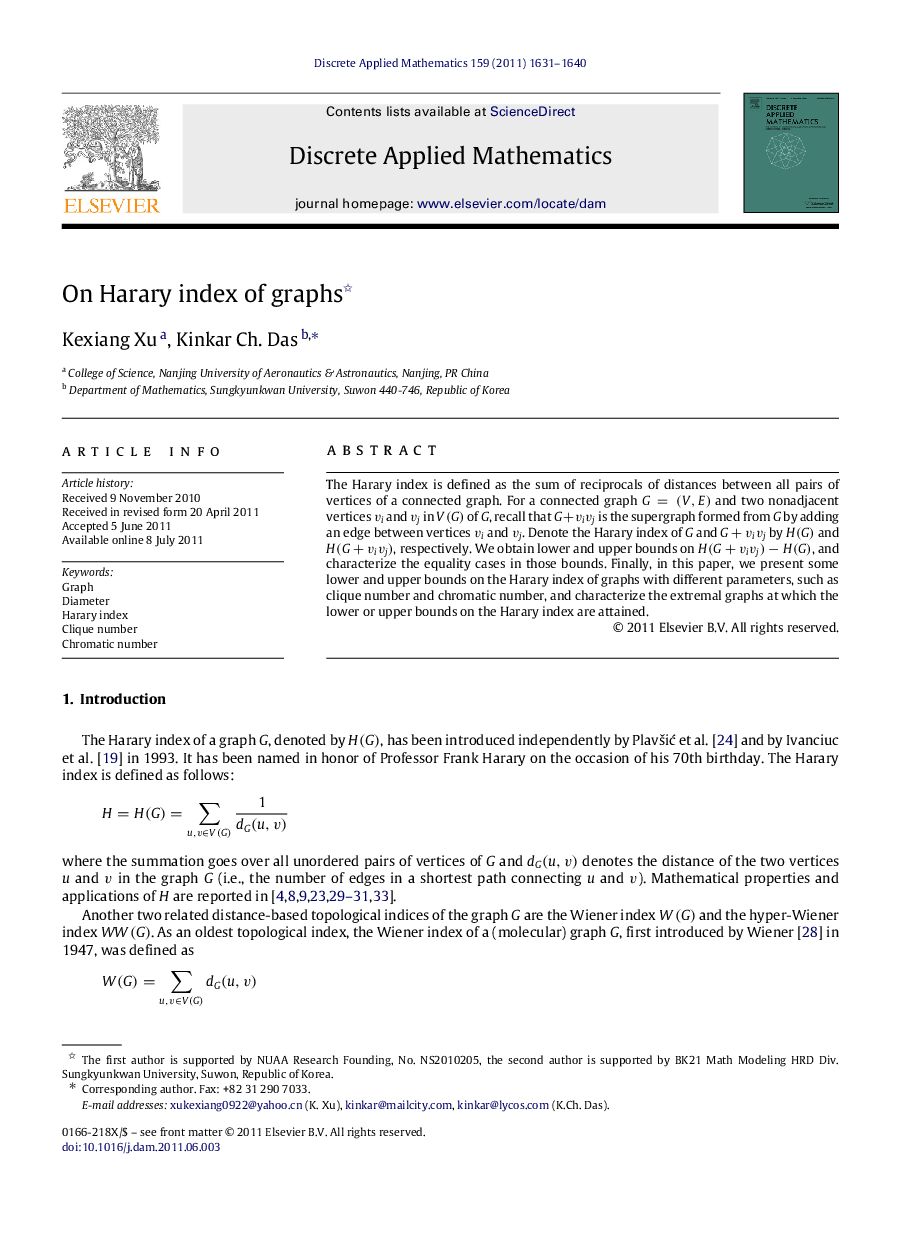| Article ID | Journal | Published Year | Pages | File Type |
|---|---|---|---|---|
| 419905 | Discrete Applied Mathematics | 2011 | 10 Pages |
The Harary index is defined as the sum of reciprocals of distances between all pairs of vertices of a connected graph. For a connected graph G=(V,E)G=(V,E) and two nonadjacent vertices vivi and vjvj in V(G)V(G) of GG, recall that G+vivjG+vivj is the supergraph formed from GG by adding an edge between vertices vivi and vjvj. Denote the Harary index of GG and G+vivjG+vivj by H(G)H(G) and H(G+vivj)H(G+vivj), respectively. We obtain lower and upper bounds on H(G+vivj)−H(G)H(G+vivj)−H(G), and characterize the equality cases in those bounds. Finally, in this paper, we present some lower and upper bounds on the Harary index of graphs with different parameters, such as clique number and chromatic number, and characterize the extremal graphs at which the lower or upper bounds on the Harary index are attained.
► We examine the changes of the Harary index of graphs when an edge is added. ► We obtain the extremal graphs w.r.t. the Harary index when clique number is given. ► We obtain the extremal graphs w.r.t. the Harary index when chromatic number is given.
